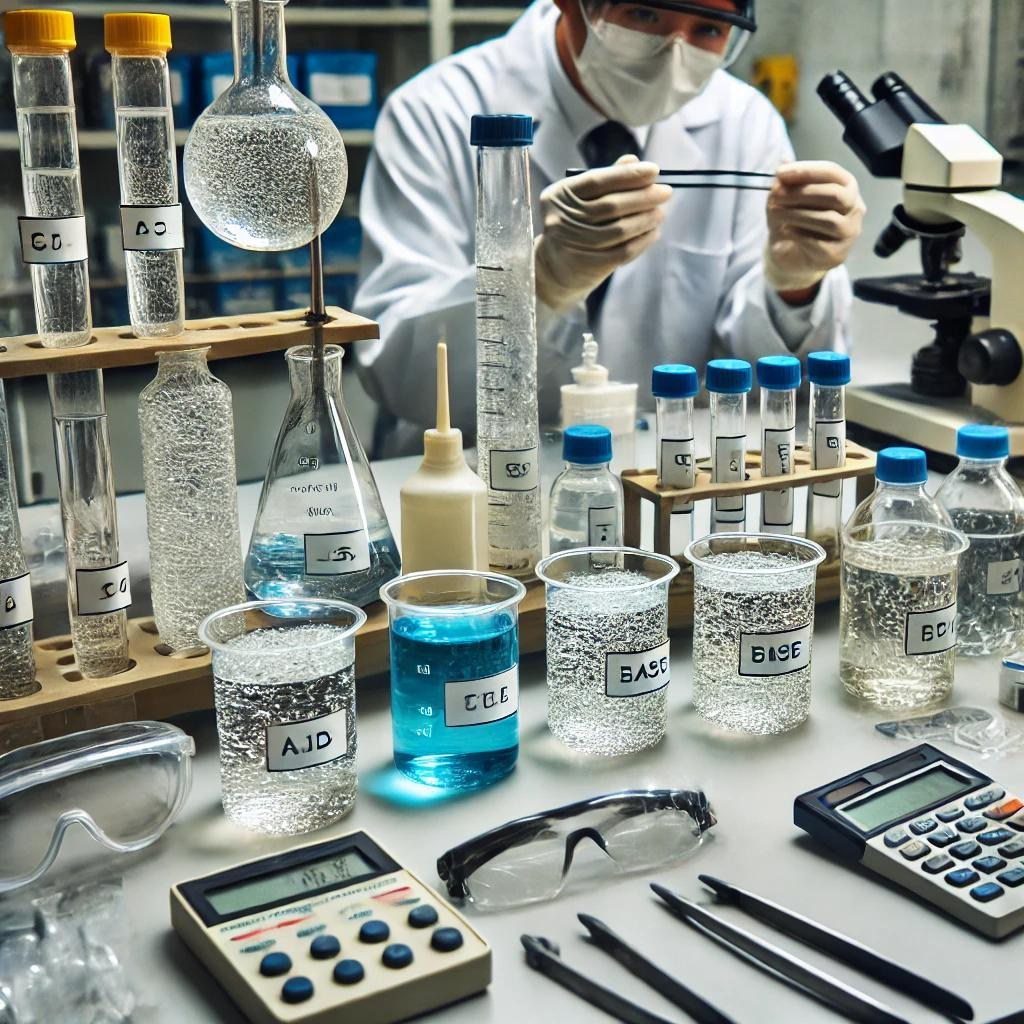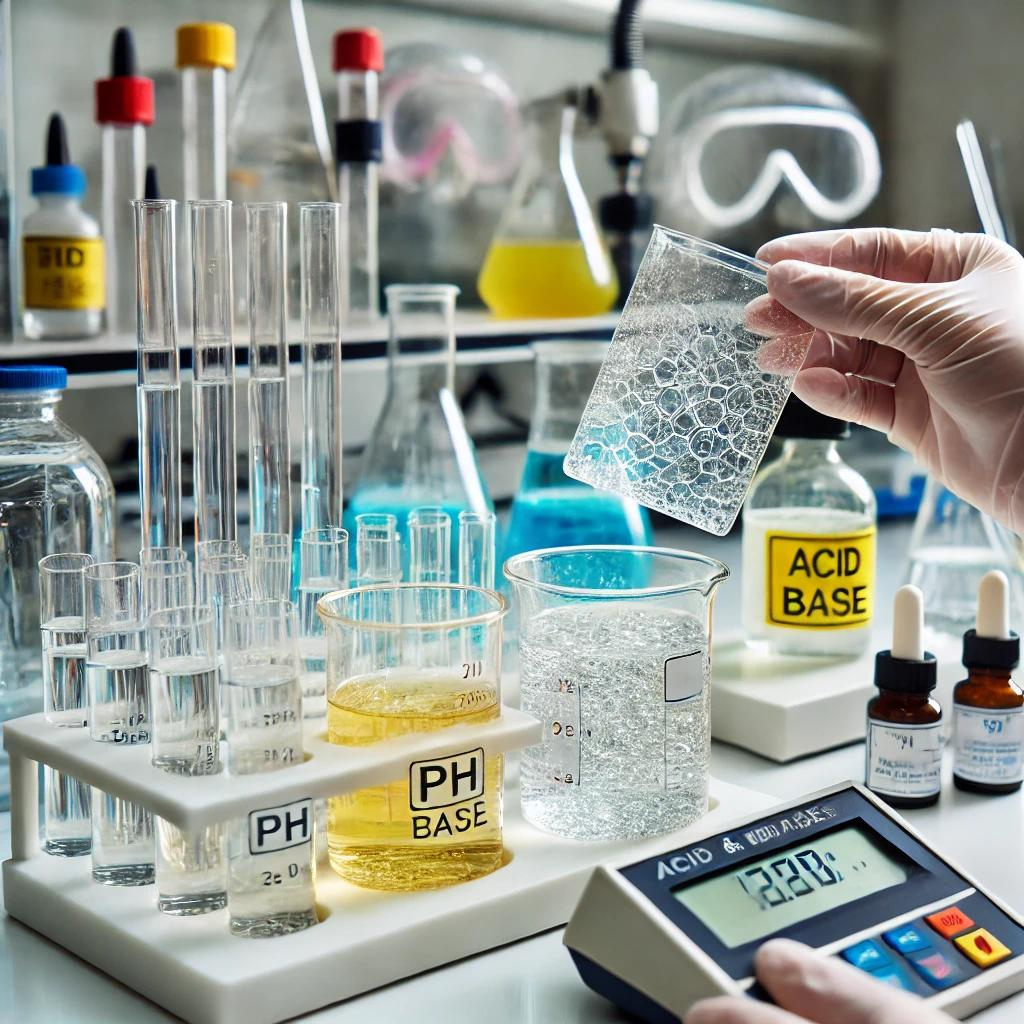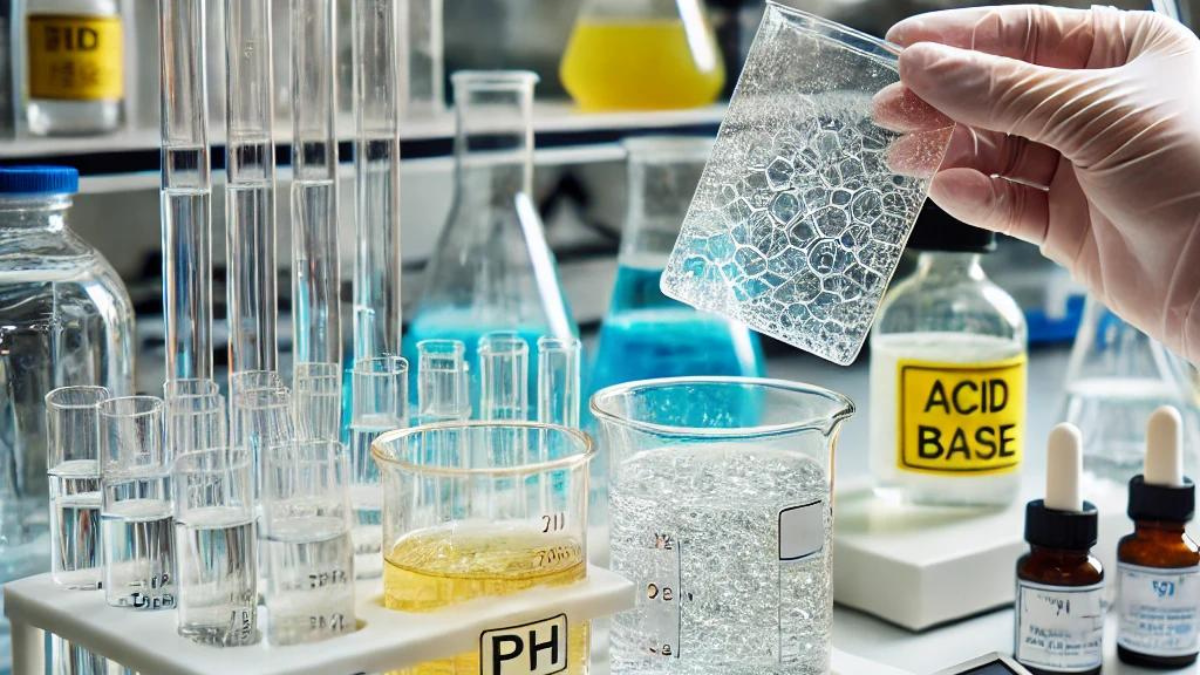Acid and Base Resistance Testing As Per ASTM D543
Exploring Acid and Base Resistance Testing: ASTM D543 Standard
Introduction
- In the world of plastics and polymers, exposure to harsh chemicals such as acids and bases is a common challenge. Whether it's industrial machinery, chemical containers, or household products, ensuring the durability of plastic materials in corrosive environments is crucial. One widely recognized standard for evaluating this resistance is ASTM D543, the "Standard Practices for Evaluating the Resistance of Plastics to Chemical Reagents." In this blog, we’ll delve into the process and importance of acid and base resistance testing as per ASTM D543.

Overview of ASTM D543
ASTM D543 is a set of standard practices designed to evaluate how plastics perform when exposed to chemicals, particularly acids and bases. This method helps determine the potential for chemical-induced degradation in plastic materials, which is vital for manufacturers across multiple industries. The standard outlines procedures to assess changes in weight, strength, and appearance, providing a reliable means to predict a material’s lifespan under chemical stress.
Importance of Acid and Base Resistance Testing
Materials exposed to aggressive chemical environments can experience significant degradation, leading to failure in applications such as pipes, containers, and medical equipment. Testing for acid and base resistance ensures that plastics retain their structural and mechanical properties even after prolonged exposure to harsh chemicals. The results of these tests are critical for industries like automotive, construction, chemical processing, and healthcare, where material failure could lead to safety risks or costly replacements.
Testing Procedure Under ASTM D543
- Sample Preparation: The first step in ASTM D543 testing involves the preparation of plastic samples, which are cut into standardized shapes and sizes to ensure consistency. The material used should represent the intended product or application to get accurate results.
- Chemical Exposure: Once prepared, the samples are immersed in a series of chemical solutions, which include acids and bases of varying concentrations. Common chemicals used in this testing include:
- Acids: Hydrochloric acid, sulfuric acid
- Bases: Sodium hydroxide, potassium hydroxide These samples remain submerged for a specified time to simulate long-term exposure conditions.
- Post-Exposure Evaluation: After the exposure period, the plastic samples are removed, cleaned, and inspected. Three main properties are assessed:
- Weight Change: A measurement of how much mass the sample has gained or lost due to chemical interaction.
- Mechanical Properties: The tensile strength and flexibility of the material are re-tested to identify any reduction in performance.
- Surface Appearance: Visual inspections look for signs of cracking, blistering, discoloration, or other surface defects.
- Data Analysis: The changes observed in the plastic material’s weight, tensile strength, and appearance are compared to pre-exposure values. Based on these results, the material is rated on its chemical resistance. Higher resistance indicates less degradation and better performance in real-world applications where exposure to chemicals is expected.
Key Benefits of ASTM D543 Testing
- Material Selection: Acid and base resistance testing helps manufacturers select the most appropriate plastic materials for specific chemical environments, ensuring long-term product reliability.
- Cost Efficiency: By selecting materials that are resistant to chemical attack, manufacturers can reduce the risk of costly failures, replacements, or downtime due to material degradation.
- Safety Compliance: In critical industries like healthcare and chemical processing, using materials that can withstand chemical exposure ensures the safety of both workers and consumers.
- Product Development: ASTM D543 provides a robust framework for evaluating new plastic materials in research and development, helping companies innovate while maintaining product integrity.
Applications of ASTM D543 Acid and Base Resistance Testing
- Chemical Processing Equipment: Tanks, pipes, and fittings that handle acidic or alkaline fluids require materials that won’t degrade over time.
- Automotive Components: Parts like gaskets, seals, and hoses may be exposed to chemicals like battery acids or coolant bases.
- Medical Devices: Equipment and packaging that come into contact with cleaning agents or bodily fluids need to be tested for chemical resistance to ensure they remain safe and functional.
- Construction Materials: Building materials, particularly those used in industrial or harsh environments, must maintain their durability despite chemical exposure.

Conclusion
- Acid and base resistance testing per ASTM D543 is an essential part of ensuring the longevity and safety of plastic materials in chemically aggressive environments. By evaluating how plastics respond to acids and bases, manufacturers can make informed decisions about material selection and improve product reliability across various applications. At Kiyo R&D Center & Laboratory, we offer comprehensive chemical resistance testing services to support your material needs, ensuring your products meet the highest industry standards.

